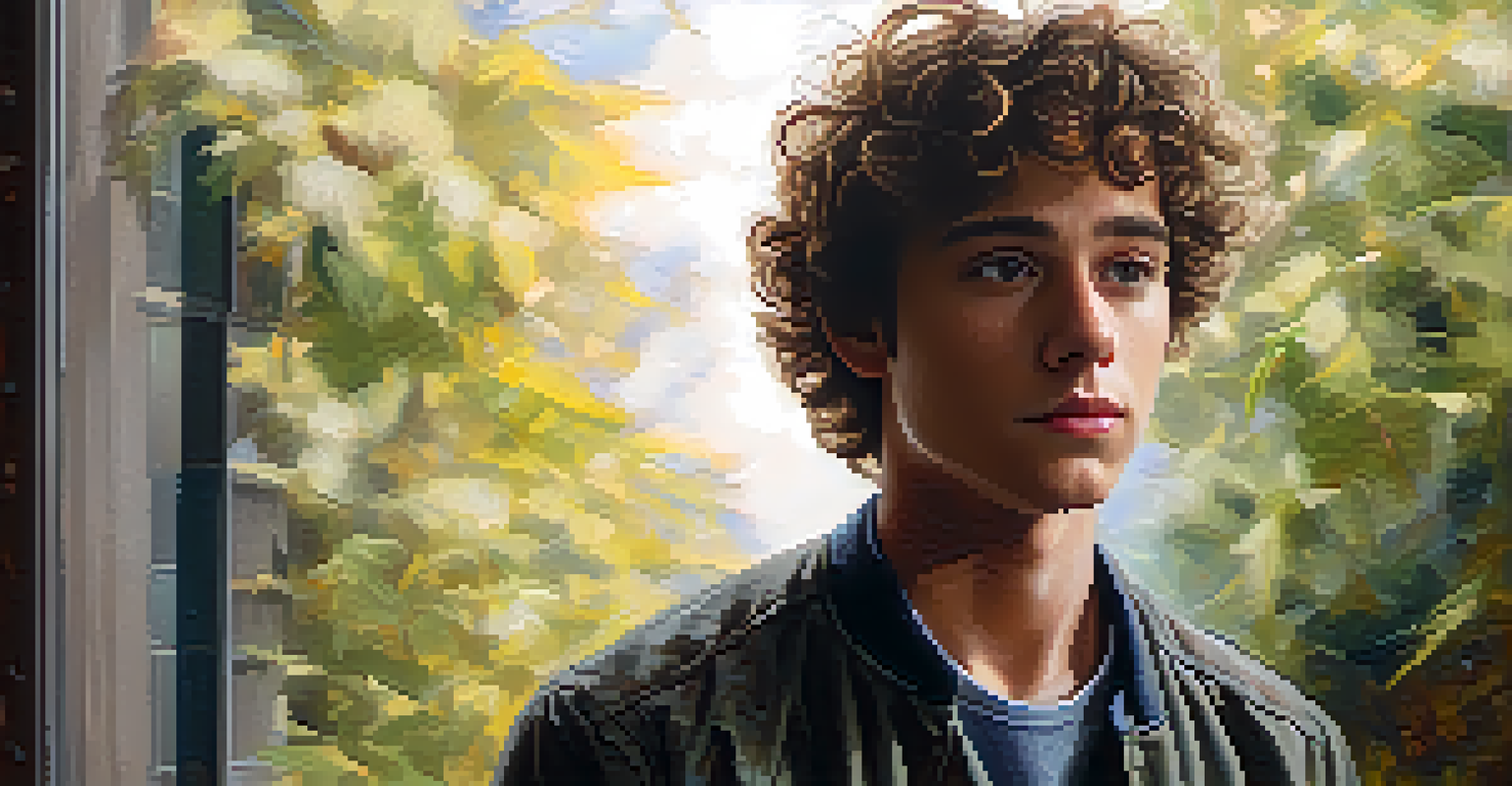Storytelling Techniques for Nonlinear Digital Narratives

Understanding Nonlinear Narratives: A New Storytelling Frontier
Nonlinear narratives break away from the traditional beginning, middle, and end structure. Instead, they allow stories to unfold in a way that can feel more organic and immersive. Think of it like a choose-your-own-adventure book, where readers have the power to navigate the story in their own unique way. This method can engage audiences more deeply, as they actively participate in the storytelling process.
Stories can be a way of exploring the world, a way of understanding what it means to be human.
In the digital age, nonlinear narratives are becoming increasingly popular across various platforms, from video games to interactive web stories. These narratives can captivate audiences by presenting multiple perspectives or timelines, giving them a richer experience. For instance, a video game may allow players to make choices that alter the storyline, creating a sense of ownership over the narrative.
Ultimately, embracing nonlinear storytelling can breathe new life into your content, making it more relatable and engaging. By allowing audiences to explore different paths, you invite them to become co-creators of the story, fostering a deeper connection with the material.
Key Techniques for Crafting Nonlinear Stories Effectively
One of the most effective techniques for nonlinear storytelling is to establish a clear thematic thread that runs through your narrative. This thread acts as a guiding light, helping audiences make sense of the various paths they can take. Think of it as a common motif or message that resonates throughout the different storylines, allowing readers to find meaning in their choices.

Another essential technique is to utilize character-driven narratives. When audiences are invested in the characters, they are more likely to navigate the storylines with interest. By developing rich backstories and complex motivations, you create characters that resonate, prompting readers to follow them across various narrative arcs.
Engage Through Nonlinear Storytelling
Nonlinear narratives invite audiences to actively participate in the storytelling process, enhancing their engagement and connection with the material.
Lastly, consider incorporating visual and audio elements to enhance the nonlinear experience. For example, interactive maps or branching timelines can help users visualize their journey through the narrative. This not only adds depth to the story but also engages multiple senses, making the experience more memorable.
Creating Engaging Characters for Nonlinear Journeys
Characters are the heart of any storytelling medium, and in nonlinear narratives, their development is crucial. To keep readers engaged, create multi-dimensional characters that evolve based on their choices and experiences. This evolution makes the story feel alive and responsive, reflecting the unpredictability of real life.
The best stories are the ones that allow readers to shape their own experiences.
Consider using backstories that are revealed gradually, allowing readers to piece together character histories as they navigate different paths. This technique not only builds suspense but also encourages deeper emotional investment. When readers feel connected to a character, they are more likely to explore various storylines.
Moreover, providing characters with distinct goals and conflicts enhances the narrative's complexity. As readers choose different paths, they encounter various challenges that test the characters’ resolve. This layered approach keeps audiences engaged, as they want to see how characters adapt and grow through different experiences.
Maintaining Coherence in a Fragmented Narrative Structure
One challenge of nonlinear storytelling is maintaining coherence amidst the fragmented narrative. A well-structured framework is essential to ensure that all paths lead to a satisfying conclusion. Using a visual outline or a flowchart can help you map out the various branches of your story, ensuring that each thread connects back to the main narrative.
Another strategy is to introduce recurring elements or motifs that recur across different paths. These elements can serve as anchors, providing familiarity for readers as they explore. For example, a specific object or phrase might appear in different contexts, helping to weave the narrative together even as it branches off in various directions.
Create Compelling Characters
Developing multi-dimensional characters with distinct goals and backstories keeps readers invested as they explore different narrative paths.
Finally, consider the pacing of your story. While nonlinear narratives allow for flexibility, ensuring that each segment flows smoothly into the next is crucial. By balancing fast-paced action with slower, reflective moments, you create a rhythm that keeps readers engaged, regardless of the path they choose.
Utilizing Technology to Enhance Nonlinear Storytelling
In today’s digital landscape, technology offers exciting opportunities to enhance nonlinear storytelling. Interactive platforms enable creators to provide audiences with unique experiences, allowing them to explore narratives in real time. For instance, using augmented reality can immerse readers in a story, making them feel like active participants rather than passive observers.
Moreover, incorporating data analytics can help you understand audience preferences and behaviors, allowing you to tailor the narrative experience. By analyzing which paths are most popular, you can refine your story to better align with audience interests. This data-driven approach not only enhances engagement but also helps creators make informed decisions about future content.
Additionally, social media can serve as a powerful tool for promoting nonlinear narratives. By sharing snippets or teasers of different paths, you can pique audience interest and encourage them to explore the full story. This strategy not only boosts visibility but also creates a sense of community among readers as they share their unique experiences.
Emotional Resonance: Connecting with Your Audience
Emotional resonance is vital in storytelling, and it's especially important in nonlinear narratives. To create an emotional connection, consider how different paths can evoke varied feelings. By allowing readers to experience joy, sadness, or tension based on their choices, you can foster a deeper relationship with your audience.
One technique is to design scenarios that challenge readers' moral beliefs or provoke thought. When audiences face difficult choices, they engage more profoundly with the narrative, prompting them to reflect on their values and decisions. This engagement not only enriches the storytelling experience but also encourages discussions among readers.
Utilize Technology for Immersion
Leveraging technology such as augmented reality and data analytics can enrich the nonlinear storytelling experience and better resonate with audiences.
Moreover, using relatable themes, such as love, loss, or redemption, can further enhance emotional impact. When audiences see their own experiences reflected in the narrative, they are more likely to invest emotionally. This connection can lead to a lasting impression, encouraging readers to revisit your story or share it with others.
Evaluating the Impact of Nonlinear Storytelling
Once you've crafted your nonlinear narrative, it’s important to evaluate its impact on your audience. Gathering feedback through surveys or focus groups can provide insights into how well your story resonates. Pay attention to which paths were most popular and why, as this feedback is invaluable for future projects.
Additionally, consider measuring engagement metrics, such as time spent on the narrative or social media shares. These metrics can provide a quantitative perspective on your story's reach and effectiveness. By analyzing this data, you can identify trends and patterns that inform your storytelling approach moving forward.

Lastly, don’t forget to celebrate successes and learn from challenges. Each nonlinear narrative is an opportunity for growth, and understanding what works—and what doesn’t—will enhance your storytelling skills. By continually refining your techniques, you'll be better equipped to craft compelling nonlinear stories that captivate audiences.